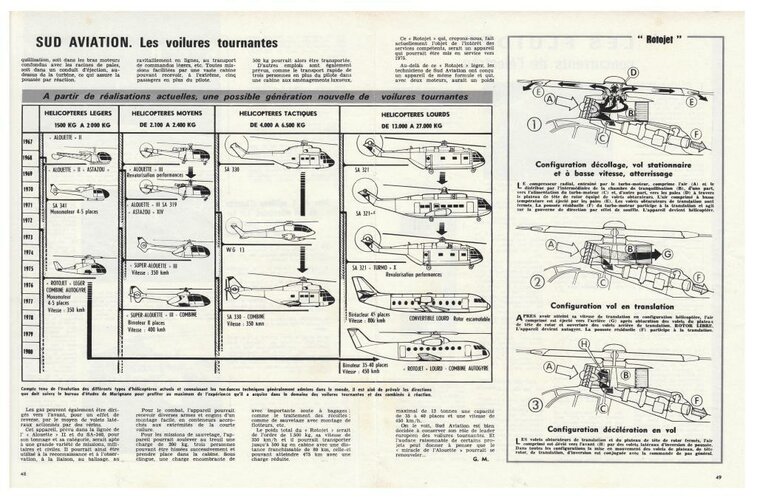Hood #11: UK choppers: patchy...odd.
1959. Minister Sandys massages a measure of coalescence to restructure UK Aero to match its likely modest ongoing business. After sorting airframe-except-HP and GW he's left with rotors: parts-of-Bristol,-Fairey,-Saro, and all of Westland. Bristol had hoped to shift rotors into BAC, who had more sense; Fairey intended to do (to be Engineering - PFCUs and such) and its 10% of (to be Trident) up North, and hoped to unload Hayes-and-choppers. DH, 9/56, had bought 33% of Saro to protect DH workshare in: SR.177 (Gyron Jr; airframe would have been assembled at Christchurch, flown from Hurn), and...big phalluses. Saro was carving out a support niche, such as in composite structure (Re-entry Vehicles), for Blue Streak and, contracted 7/55, its proof-of-concept vehicle, Black Knight. For Sandys that was of greater relevance than their flirtations with choppers, and, alone, made a Defence/political necessity to preserve Saro. If he had known that Blue Streak would be chopped 13/4/60, he might well have judged that choppers were unworthy of Ministers' time. Far from #11/Hood's "longer tale of woe", he might have let Hayes and Cowes gently expire, lacking a Trade Buyer. Ample good kit was readily available at market.
But he chose to encourage Westland to become monopolist: primarily, to preserve Saro in GW. He funded Sprite R&D, becoming a pre-production batch of Scout, 5/60 (and after his time, but conforming to his policy) Sea Scout 9/61. Dither caused AAC to extract a market supply of 17 Alouette II...on which we, like so many other sensible folk, should have settled for most things rotary. Instead we paid for Blackburn to Anglicise Alouette's engine as Nimbus, while Army tried to disabuse RAF's perception that Alouette-delivering- SS.11 in Algeria, 1958, had no relevance to Red armour in N.Europe (it would be mid-1970 before Scout/SS.11 would be operational in BAOR). Patchy. Odd.
So: 1964, even before October change of Govt. What to do about deep strike? Clearly not TSR.2, drifting, billing. Oh, and from 10/64: slash and hack Defence expense. The Anglo-French chopper package was a ticket to (to be Jaguar and) AFVG. Puma was "not wanted by RAF" in the sense that budget priority was elsewhere - such as early retirement of Belvedere before it incinerated the entire heli-transport trade, and Wessex was fine pro tem (tem outlasting the century). But Puma-NOW lubricated both Lynx and AFVG later. The package was a means to a higher end.


